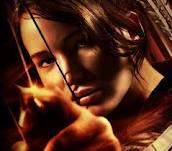What is Media Studies?
Task 1 – Design a Front Cover
Plagiarism
Adverts
Task 2 – Brands
Task 3 & 4 – Looking at three adverts
Task 5 – Playing Happy Families
Task 6 – Research activity
Task 7, 8 & 9 – Analysis
Task 10 – Stereotyping
Task 11 – Let’s get Fizzy! Creative task
Comics
Task 12 – Looking at comics – target audience?
Task 13 – Cross-media – comics and animation tie-ins
Task 14 – National 3 SQA Challenge
Task 15 – Design an original Comic Strip
Last supported study session prior to exam
Friday 31st May 1p.m.-3p.m.
Be there!
Discs available with film clips
3 stars appeared today for the study session. You know who you are! Well done.
The rest of you missed being given the discs with lots of helpful film clips to remind yourself of codes – camera angles, colour, sounds, special effects etc – that were used in each scene.
These discs are available for uplift for all Intermediate 1 pupils. Please drop by and pick up your own disc.
Notes on the production codes are also available from Mr B. Pick them up!!!!
There will be a final supported study session on Friday 31st May from 1-3.30.
May the odds be ever in your favour.
Last minute tips for analysis
Remember to come in tomorrow periods 1 & 2!!!!!
Phrases to make it look as if you know what you’re talking about (but not enough on their own)
Genre – Blockbuster sci-fi adventure
Narrative structure – Equilibrium – Disruption – Attempt to repair disruption – New equilibrium
Representation – stock character stereotypes villain / heroine made using colour, camera angles etc
Antagonist/Protagonist – enemy/central character
Special effects – exciting and dynamic visual and sound effects created an impact when…
Subversion – story goes off somewhere unexpected such as during a flashback of the mine explosion
diagetic/non-diagetic sound – it matches what you see on the screen / it has been added in but there is no visible source like the music soundtrack.
Profitability – trailers in cinema and on TV duing Superbowl / posters / internet website / social media such as Facebook; Twitter etc / Chat show interviews of main stars / Award ceremonies / Magazine and Newspaper articles.
Take a survey – your opinion counts!
Use this link
http://www.surveymonkey.com/s/W9J3DRM
Binary opposition
Think about how each of these were used in the narrative structure. Opposites in character, setting etc are common themes in films
light/dark
good/evil
noise/silence
youth/age
right/wrong
poverty/wealth
strength/weakness
inside/outside
Hunger Games – character types reminder
Character Type Role within narrative
Protagonist (or Hero) – Leads the narrative, is usually looking for something (a quest) or trying to solve something (a mystery). Does not have to be male 🙂 Katniss
Antagonist (or Villain) – Gets in the protagonist’s way President Snow
Heroine – Is usually some sort of prize or reward for the hero. NB if your hero is female, your heroine can be male 🙂 Peeta
Helper/Mentor/Donor – Helps the hero – often acts as a sidekick – Haymitch
Complete the Production questions and return the paper to Mr B. by Wednesday 22 May
Now, how to get ready for the Media exam on Monday 3rd of June
1 Look at your answers to the past paper analysis questions – look at my comments for what would have made it better.
The 3Cs are colour, camera work and character
The 3Ss are sound, special effects and sets (including props)
2 Complete the Production questions and return the paper to Mr B. by Wednesday 22 May by the latest so it can be returned to you on Thursday to help you to study.
3 Attend supported study on Thursday 23rd May in G:14 which will run from 9.00-11.00. It is advisable that you attend this to remind yourself of the perfect answers. No “time off” can make up for being talked through the process to give yourself the best chance.
4 Look at the blog at least twice a week.
SFX technology
The control room is completely created through the use of CGI and green screen. The set consists simply of bare desks and actors who mimic movements which are later matched which computer generated images.

Examples of CGI can be seen when one gamemaker creates a fireball in the control center and then pushes it towards Katniss.

Another gamemaker creates a hologram of a mutt on a touchscreen interface and places it in the arena near Katniss and Peeta. Both the fireball and the Mutts are created with CGI but look extremely realistic.
Appealing to an audience – camera shots that were used for this section of the exam paper
Point of view shots – the camera aims to show us what the character would see. Example when we see the target just before Katniss shoots her arrow towards it.
Reaction shot – usually a close up or extreme close up so we are aware of the character’s emotions – Example when Katniss is overcome when she is interviewed by the TV host and she asks him to repeat the question because she hasn’t heard it and her embarrassment makes the studio audience warm to her.
Shot-reverse-shot – where the screen shows us the close up of two characters having a conversation, alternating between the two. Example when Katniss and Peeta are talking intimately on the window ledge prior to the games beginning.
Insert shots – where the cinema audience knows something the main character doesn’t know yet. Example when the computer generated large dogs are created and about to go in to the game or when the fire and projectiles are planned so that Katniss will be in even more danger.


